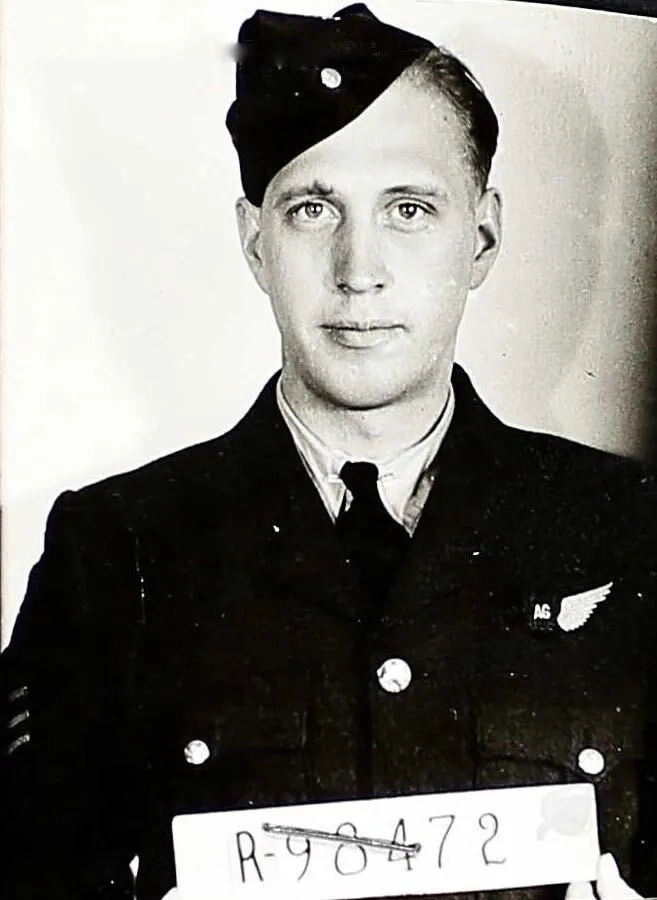Staples, Gerald Frank (Flight Sergeant)
Killed in Action 1944-June-13
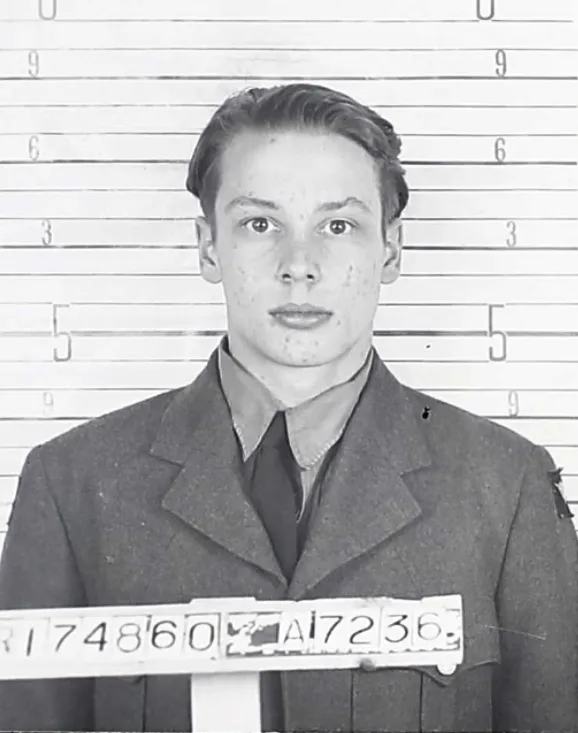

Birth Date: 1924
Born:
Parents: Son of Eben M Staples and Edna Staples; husband of Christina Watt Staples, of Marysville, New Brunswick.
Spouse: Husband of Christina Watt Staples, of Marysville, New Brunswick.
Home: Fredericton, New Brunswick
Enlistment:
Enlistment Date: unkown date
Service
RCAF
Unit
162 (BR) Sqn- Squadron
Sectabimur Usque Per Ima We will hunt them even through the lowest deeps
Base
Rank
Flight Sergeant
Position
Wireless Air Gunner
Service Numbers
R/174860
Crew or Other Personnel
Canso 9816
Accident Card - Consolidated Canso A serial:9816
This accident involved 1 aircraft on 1944-June-13. Canso s/n 9816.
This accident involved 8 people. Bergevin JJC, Chapman GW, Cromarty BF, Leatherdale HC, Macrae JM, Reed FK, Staples GF, Waterbury DJC
This accident had 3 fatalities. Pilot Officer Frank Keith Reed RCAF Killed in Action service no:J/4755 Canso 9816, Flight Sergeant Gerald Frank Staples RCAF Killed in Action service no:R/174860 Canso 9816, Warrant Officer 2nd Class Harry Clifford Leatherdale RCAF Killed in Action service no:R/52458 Canso 9816
Canso serial: 9816
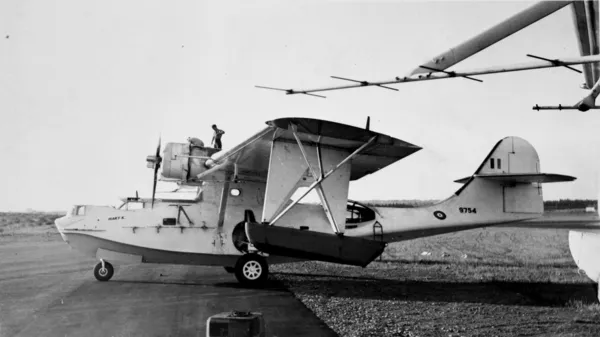
The Consolidated Catalina and Canso were close cousins. The Canso was the true amphibious version of the design and therefore included a conventional undercarriage to allow for either water or land use. The Canso provided more than two decades of valuable service to the RCAF. The Catalina variant came first and was produced beginning in 1935 for the United States Navy. The amphibious version, designated PBY-5A, came in service early in 1941 and the RCAF began using the aircraft on anti-submarine patrols that same year. After the Second World War, the RCAF used Cansos for search and rescue, Arctic survey missions and various transport operations. RCAF
Aircraft Images
Canso 9816
Canso A 9816
By June 1943 was being used by No. 161 (BR) Squadron to test four fixed nose guns. To Clark Ruse Aircraft in Moncton on 16 August 1943, probably for repairs. Back to EAC on 4 April 1944. Coded "T" of No. 162 (Bomber Reconnaissance) Squadron, RAF Wick, Scotland. On 3 June 1944, with Flight Lieutenant R.E. MacBride and crew, sank U-477 at 63-59N 01-37E in the face of intense AA fire from the U-boat. On 13 June 1944, operating from Wick, Scotland with Wing Commander C.G.W. Chapman and crew, sank U-715 at 62-45N 02-59W. As a result of AA fire from the U-boat, the Canso had to ditch and the crew spent nine hours in the water; one crewman drowned. Two others died shortly after being rescued by an RAF launch.{{link,canadaprimary,https://heritage.canadiana.ca/view/oocihm.lac_reel_c5933/2066,RCAF - Accident Investigation File}}
1943-05-27 Taken on Strength Eastern Air Command 2019-08-20
1943-August-06 Accident: 161 Squadron Loc: Dartmouth Nova Scotia Names: Anderson | Clarke | Dorsey | Gibbs | Landy | Montgomery | Oliver | Renolfe | Womersley
1944-June-13 Accident: 162 Squadron Loc: Names: Bergevin | Chapman | Cromarty | Leatherdale | Macrae | Reed | Staples | Waterbury
1944-09-05 Struck off Strength Struck off after ditching. See comments. 2019-08-20
Unit Desciption
162 (BR) Sqn Sectabimur Usque Per Ima ()
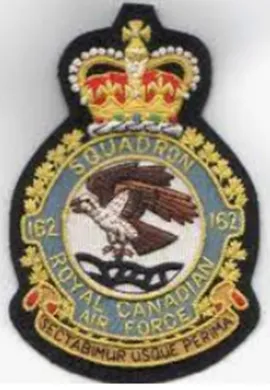
The squadron was formed as a Bomber Reconnaissance unit at Yarmouth, NS on 19 May 1942, flying Consolidated Canso A aircraft. The squadron remained at Yarmouth until January 1944 in uneventful anti-submarine duty. In January 1944 it was lent to RAF Coastal Command and operated from Reykjavik, Iceland until 13 June 1945. One U-boat was destroyed by aircraft from Reykjavik. During part of 1944 the squadron operated from Wick, Scotland, and found success by destroying 4 German U-boats and sharing in the destruction of a fifth. During one of these engagements, with U-1225, Flight Lieutenant D.E. Hornell and crew sank the U-boat but their aircraft was forced to ditch as a result of anti-aircraft fire from the submarine. The crew spent 21 hours in a single dinghy. 2 of the crew died, and Hornell himself died shortly after his rescue. He was posthumously awarded the Victoria Cross for his inspirational leadership and devotion to duty.
Details of the U-boat sinkings were as follows. On 17 April 1944 Flying Officer T.C. Cooke and crew in Canso 9767 “S†flying from Iceland sank U-342; on 3 June 1944 Flight Lieutenant R.E. McBride and crew in Canso 9816 “T†flying from Wick sank U-477 in the face of intense return gunfire; on 11 June, 1944 Flying Officer L. Sherman and crew in Canso 9842 “B†flying from Wick sank U-980; on 13 June 1944 Wing Commander C.G.W Chapman and crew in Canso 9816 “T†flying from Wick sank U-715 although their aircraft was shot down and the crew had to take to their life rafts with the loss of one of their number (Chapman was awarded the squadron’s first DSO); on 24 June 1944, Flight Lieutenant D.E. Hornell and crew in Canso 9754 “P†sank U-1225 (see above); on 30 June 1944 Flight Lieutenant R.E. McBride and crew in Canso 9841 “A†flying from Wick damaged U-478 which was later finished off by an RAF 86 Sqn Liberator; on 4 August 1944 Flying Officer W.O. Marshall and crew in Canso 9759 “W†flying from Wick damaged U-300.
In the course of WWII, the squadron flew 2100 sorties for 22, 600 operational hours. 6 aircraft were lost, and 34 aircrew, of whom 17 were killed and 17 missing. Squadron members were awarded 1 VC, 2 DSO's, 2 MBE's, 16 DFC's, 3 AFC's, 4 DFM's, 1 BEM and 21 Mid's. The squadron returned to Canada on 14 June 1945 and was disbanded at Sydney, NS on 7 August 1945.
Maps for Movements of 162 Squadron 1942-45
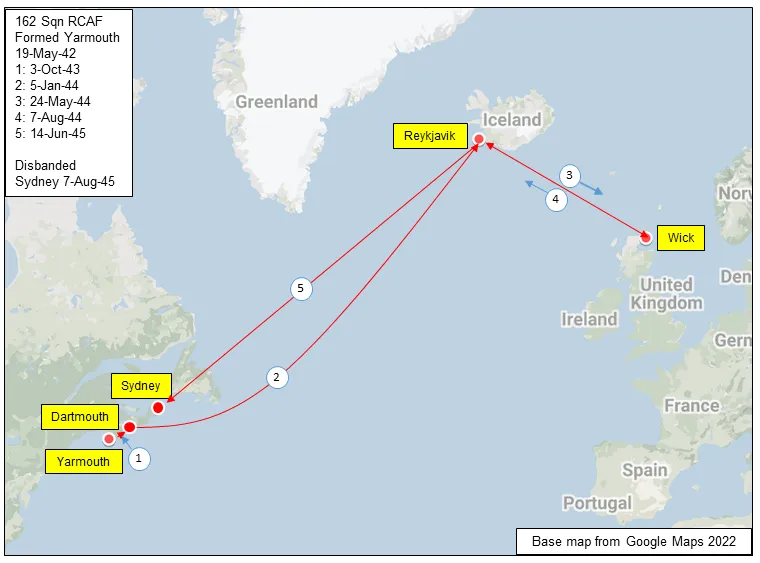
MAP 1: 162 Squadron Movements 1942-45 (right-click on image to display enlarged in new tab)
|
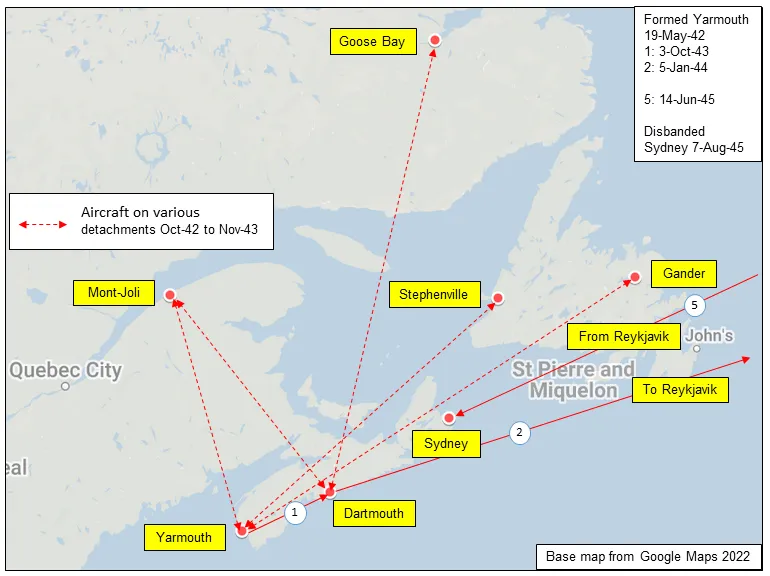
MAP 2: 162 Squadron Movements Eastern Canada 1942-44
|
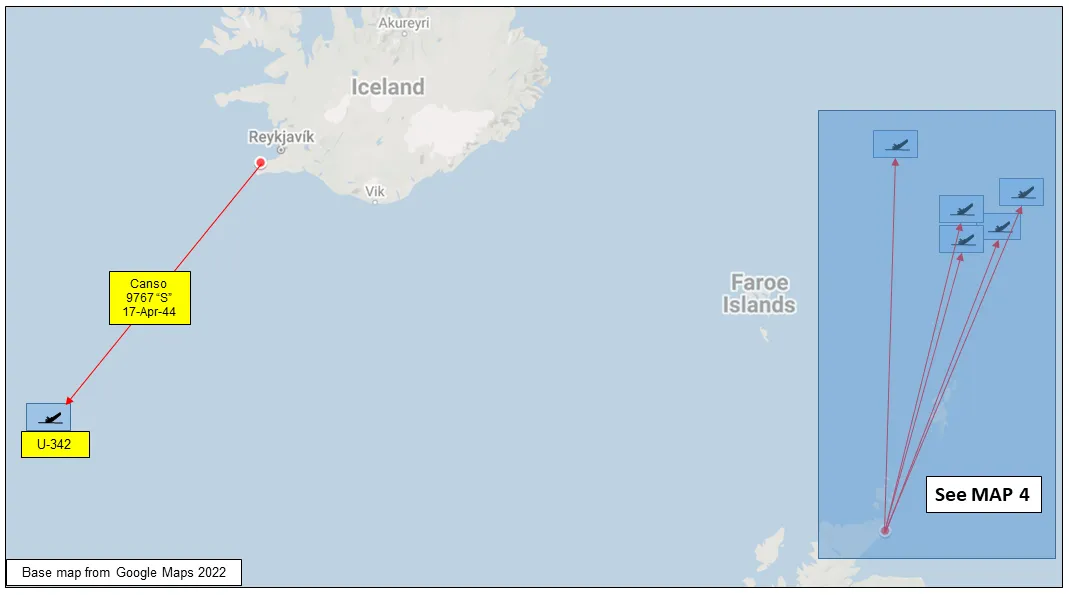
MAP 3: Sinking of U-342
|
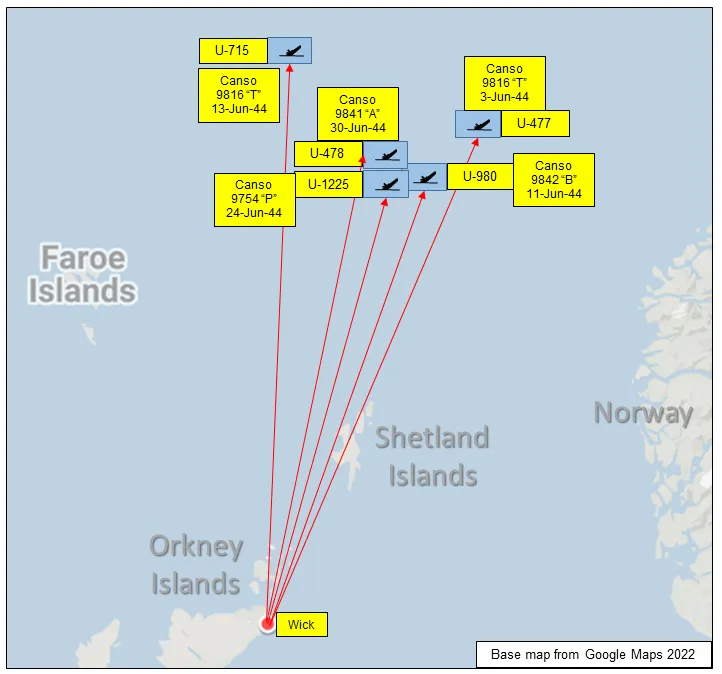
MAP 4: U-boat sinkings from Wick
|
162 Squadron History Summary 1942-45
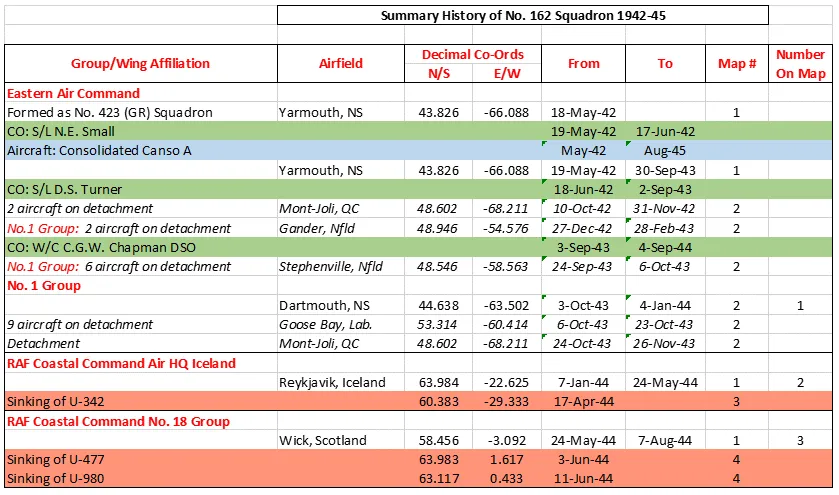
162 Squadron History Summary 1942-45 Page 2


